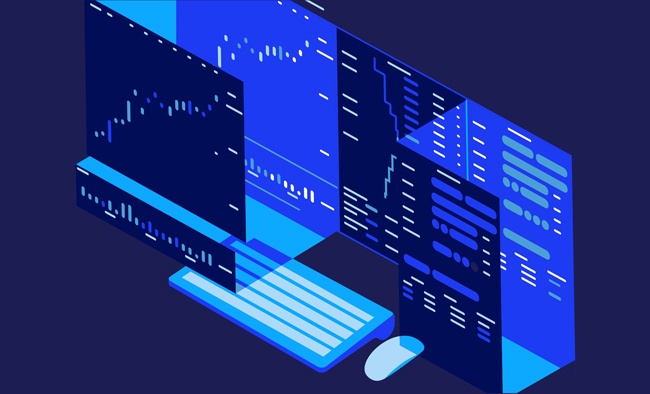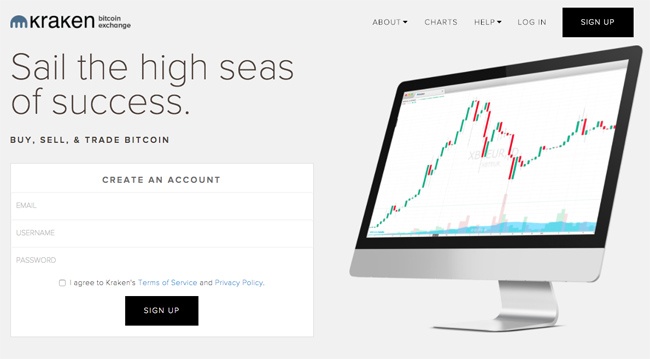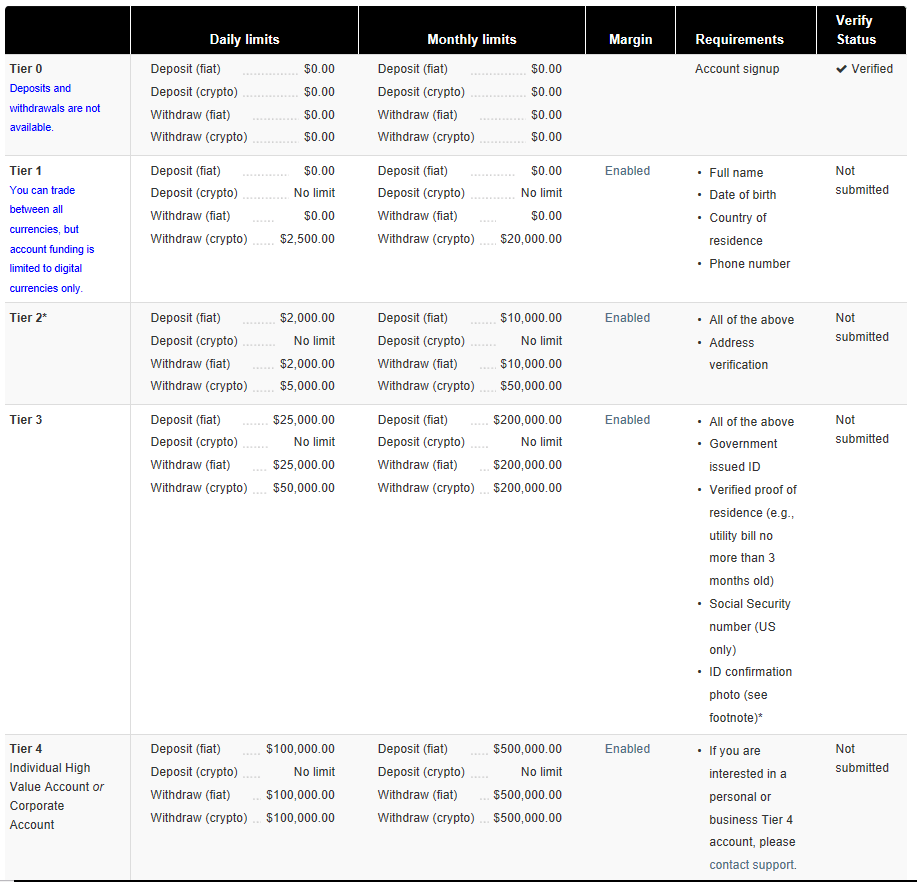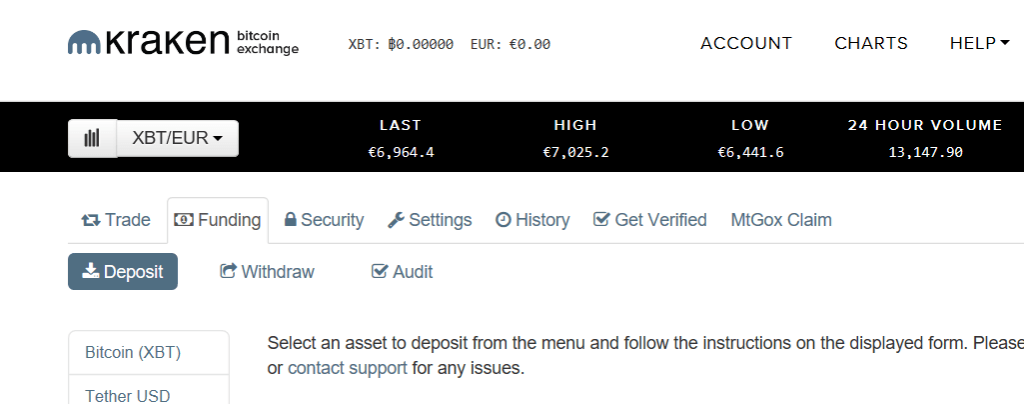Kraken is a cryptocurrency exchange with headquarters in San Francisco, California, United States that was launched in July 2011, making it one of the oldest existing cryptocurrency exchanges. It was founded by Jesse Powell, who remains the CEO of Kraken, but the exchange is now owned by Payward Inc.
Despite its location in the U.S. it bills itself as “the world’s largest Bitcoin exchange in euro volume and liquidity”, and it serves clients in Europe, the U.K., the U.S., Japan and other countries across the globe.
It is also noteworthy that Kraken is the exchange providing pricing data to the Bloomberg Terminal, as well as being the exchange chosen to provide Mt. Gox creditors with claim support following the catastrophic 2014 hack that saw 650,000 Bitcoin go missing.
Who is Kraken
While Kraken is one of the oldest operating cryptocurrency exchanges, it is far from the largest. In fact, it is listed as the eighth largest exchange by Coinmarketcap.com, just behind its rival GDAX (operated by Coinbase).
The difference is only $13 million however, and if you take a closer look at the numbers you’ll see that Kraken actually trades more Bitcoin than GDAX, primarily because of the heavy European usage. In fact, it does trade more BTC/EUR than any other exchange.
It’s a bit ironic that the two exchanges are so closely matched, since they are both headquartered in San Francisco, and were both started in July 2011. I guess San Francisco in 2July 2011 was the place to be if you wanted to start a Bitcoin exchange.
Interestingly, Jesse Powell launched Kraken after visiting the offices of Mt. Gox just one month after they suffered their first, and least damaging, of two Bitcoin hacks.
Mr. Powell saw how poorly Mt. Gox was being run and decided to create an exchange himself that would offer clients an alternative, as well as promoting the adoption of Bitcoin. It was somewhat prescient as Kraken was well prepared in 2014 when several exchanges, including Mt. Gox, became victims of the “transaction malleability” exploit. Subsequently it became the exchange chosen by trustees for Mt. Gox for creditors to receive their claims.
Kraken is ahead of its competition as it provides trading in multiple currencies, including U.S. dollars, Canadian dollars, euros, and yen. It also enjoys a good reputation among traders as one of the few exchanges never to have been breached in a hacking attempt.
Kraken is also notable in its operation of an Ethereum dark pool, an anonymous transaction system meant for institutional use and high net worth investors.
Kraken Trading Products
Kraken is used most heavily to trade BTC/EUR and BTC/USD, but also has substantial ETH trading volume. In addition, it supports a number of other cryptocurrencies for trading. In total, including Bitcoin, there are 17 cryptocurrencies available for trade on the Kraken exchange. These are Bitcoin (XBT), Ethereum (ETH), Bitcoin Cash (BCH), Monero (XMR), Dash (DASH), Litecoin (LTC), Ripple (XRP), Stellar/Lumens (XLM), Ethereum Classic (ETC), Augur REP tokens (REP), ICONOMI (ICN), Melon (MLN), Zcash (ZEC), Dogecoin (XDG), Tether (USDT), Gnosis (GNO), and EOS (EOS).
It isn’t the largest number of cryptocurrencies available at an exchange by a long-shot, but it also isn’t the smallest number of cryptocurrencies available. We here at Unblock think it strikes a nice balance, and gives traders and investors sufficient options without overwhelming.
In addition to basic limit and market orders, Kraken is unique in being one of the only cryptocurrency exchanges to allow clients to trade on margin. Margin is borrowed money, and allows traders to leverage their trades, amplifying both gains and losses.
For example, you could open a $5,000 position and if you use 5:1 leverage it means you would need just $1,000 in your account and the other $4,000 is borrowed. If your trade moves 20% higher you would double your $1,000 investment. Of course if the position moved 20% lower you would be losing your entire $1,000 stake.
Leverage and margin should only be used by experienced traders, and care should always be used when trading on margin as your losses can exceed your account balance.
The use of margin also allows traders to place a short position against Bitcoin or other cryptocurrencies by borrowing them and selling them in hopes that price will go lower and they can then be bought back at a lower price.
The margin amounts are dependent on the account tier the client holds, and go up substantially for tier 3 and tier 4 accounts.
Kraken currently supports margin for USD, EUR, Bitcoin, Ethereum, Ripple, Ethereum Classic, USD Tether and Augur REP tokens. Margin trading is supported on these currency pairs: XBT/EUR, XBT/USD, ETH/XBT, ETH/USD, ETH/EUR, ETC/XBT, ETC/ETH, ETC/USD, ETC/EUR, REP/XBT, REP/ETH, REP/EUR.
In addition to the basic consumer accounts, Kraken also runs a dark pool for institutional and high net worth investors. These accounts feature higher margin limits, lower fees, and anonymous trades.
Kraken User Safety
Users thinking of opening an account at Kraken can feel secure that their funds and personal information will be handled properly and safely. As one of the oldest and largest exchanges, with clients from all across the globe, Kraken takes their client safety very seriously.
They have also gone through three separate funding rounds, securing $6.5 million in capital from 13 different investors, including Money Partners Group, Blockchain Capital and Digital Currency Group.
Kraken also passed the world’s first cryptographically verifiable proof of reserves audit in 2014, using the Merkle Tree method to confirm that the total amount of Bitcoin held by Kraken exceeds the account balances of client accounts.
We think this is vastly superior to the fractional reserve banking method employed by traditional banks, where most commercial banks only need to hold 10% reserves against their total deposits. We wonder where the other 90% will come from if all the banks’ customers decided they want their money?
It’s also notable that Kraken was opening 50,000 new accounts daily as of December 2017. That seems like a lot of people putting their trust in this cryptocurrency exchange, and while following the masses isn’t always a good strategy, in this case it points to a level of safety when dealing with Kraken.
Kraken Account Security
Kraken is one of the most secure cryptocurrency exchanges available today, and remains one of the few to never have suffered a hack or loss of client coins. They take security very seriously, and the platform was built from the ground up with security in mind.
It was this very focus on security that allowed Kraken to one of very few exchanges to avoid the 2014 Bitcoin “transaction malleability” exploit that led to the theft of 650,000 Bitcoin from Mt. Gox. CEO Jesse Powell was quoted in a Fortune article soon after that the vulnerability was avoided by not relying on transaction IDs alone to track Bitcoin transfers:
“
We knew that relying on TXID would eventually cause problems, so we built a more robust system of accounting. We never had to make a fix because we planned ahead and didn’t take shortcuts in the beginning.”- Jesse Powell
In addition to the usual password rules, Kraken also employs 2-factor authentication (2FA) to further secure client accounts. This 2FA requires a user to enter a code generated in a separate application before they are able to access their account.
Kraken also recommends that the email associated with your account be secured with 2FA and a strong password. Furthermore, they allow for the generation of a master key that can be used for authentication in the case of account recovery.
Besides these basic security features, Kraken also offers some advanced security features. You are able to lock all your account settings with the global settings lock. Once this has been done, you can then create additional 2FA within the account for trading and for funding the account.
And finally, if you have email that supports PGP/GPG signing and encryption you can provide Kraken with your PGP key in order to receive encrypted and signed email from them.
If you have any questions regarding the use of any of these account security features, the Kraken support team is available to assist you in fully securing your account. Kraken has always stressed their recognition of their responsibility to protect client accounts and funds, and is equally committed to ensuring that clients do all they can to help protect their accounts.
How do I Create a Kraken account?
Creating a Kraken account is no more difficult than creating most other online accounts. Going to the signup page will present you with a simple three line form asking for your email address, a username for your account and a password selected by you. Password must be at least 8 characters in length and contain letters, numbers, and special characters.
Tick off the box to agree to Terms of Service and Privacy Policy, click the Sign Up button, and in just 10 seconds you’re almost done.
Next you’ll be presented with a screen to activate your account. Here you’ll need an activation key that was emailed to you from Kraken, as well as your username and password. Fill in all the fields, check off the box to prove you’re not a robot, and click the “Activate Account” button.
Or you can simply click the handy activation link right in the activation email. And that’s all there is to creating an account. Once you activate your account it will log you right in.
Now, if you want to make a deposit and begin trading you’ll need to get verified. Basic verification that gets you access to tier 2 only requires your full name, date of birth, country of residence, address, and phone number.
If you want to access tier 3 and tier 4 you need to provide additional information such as a government issued ID and proof of residence. In some countries we require SSN (US only) or ID confirmation (Germany or Japan). These requirements are put in place to prevent fraud and to keep Kraken fully compliant with KYC and AML regulations for trading of digital assets.
What are the Verification Tiers?
The law requires Kraken to know who you are and where you are. The more services you need, the more information they have to collect from you.
Tier 0 – You can look around but you can’t deposit, withdraw or make any trades. Email address required. You really can’t do much of anything at this tier and if you want to get a feel for the exchange you’ll need to get at least to tier 1.
Tier 1 – You can deposit and withdraw in digital currency only. Trading, however, is enabled in digital as well as fiat currencies. Full name, date of birth, country and phone number are required. At this tier there are no daily or monthly deposit limits, but you are limited to withdrawing less than $2,500 worth per day and $20,000 per month.
Tier 2 – You can deposit, withdraw and trade in digital currency, and depending on your country of residence, fiat currency funding may be accessible to you.
Bank deposits and withdrawals are available to clients in some areas at this tier and higher. You are required to provide your address. Tier 2 access allows you to deposit fiat currency up to $2,000 daily and $10,000 a month. You can also withdraw $2,000 in fiat daily and $10,000 per month.
In addition your cryptocurrency withdraw limit increases to $5,000 daily and $50,000 monthly. It took me no more than 10 minutes to get verified for tier 2 access, and this level is probably sufficient for most beginning traders who don’t need to deposit fiat.
Tier 3 – You are required to upload a valid Government ID and a recent proof of residence (can be uploaded under ‘Get Verified’ tab of your Kraken account).
In order to deposit fiat in the US, Canada, Germany, Japan, and other countries depending on what currency you intend to deposit, Tier 3 verification is required.Also, some funding options require a photo ID confirmation.Tier 3 verification increases your daily fiat deposit limit to $25,000, with a monthly limit of $200,000.
The withdrawal limit for fiat currency increases to $25,000 daily and $200,000 monthly. The amount of cryptocurrency you are allowed to deposit daily rises to $50,000 and monthly to $200,000. This is perfect for serious traders.
Tier 4 – It’s like Tier 3 but with even higher funding limits. There are both individual and corporate Tier 4 accounts. The required documents for Tier 4 individual accounts include a signed application form and KYC documents.
You’ll need to contact Kraken support if corporate account verification is necessary.Accounts at tier 4 can deposit up to $100,000 in fiat currency daily and up to $500,000 monthly. Withdrawal limits for both fiat and cryptocurrency is $100,000 daily and $500,000 monthly.
Once you submit your application, it’s reviewed by Kraken as quickly as possible. They say that usually Tier 1 and 2 verification takes a few hours and Tier 3 verification takes no longer than a few days. Here’s a handy chart for those who prefer visual representations:
Kraken Deposits and Withdrawals and Fee Structure
Once you have your account verified above level 0 you’ll likely want to make a deposit and fund your account so you can start trading. It’s quite easy to do this. When logged in you’ll see the second tab is called “Funding”. Click that and you’ll be taken here:
Now you can choose to deposit/withdraw, and select your preferred deposit/withdrawal method. You can deposit into the exchange via the bank transfer function if it’s available.
Or utilize a cryptocurrency wallet in order to transfer cryptocurrency funds. Take note that transferring funds isn’t free. There are various fees imposed depending on how you choose to deposit and withdraw from your account. Current funding options and fees include:
- EUR SEPA: Deposit (Free) / Withdrawal (€0.09) – EEA countries only
- USD Bank Wire Deposit ($5 USD) / Withdrawal ($5 USD) – US only
- EUR Bank Wire Deposit (€10) – outside US only
- USD Bank Wire Deposit ($10 USD) / Withdrawal ($60 USD) – outside US only
- JPY Bank deposit (Free, ¥5,000 deposit minimum) / withdrawal (¥20) – Japan only
- CAD Wire Deposit (Free) / EFT Withdrawal ($10 CAD fee, $25K CAD daily max)
Transfers made in digital currencies come with their own fees as below:
- Bitcoin (XBT): Deposit (Free) / Withdrawal (฿0.001)
- Ether (ETH): Deposit (small transaction fee to move ETH into Kraken’s wallet) / Withdrawal ( Ξ0.005)
- Ripple (XRP): Deposit (Free) / Withdrawal (Ʀ0.02)
- Litecoin (LTC): Deposit (Free) / Withdrawal (Ł0.02)
- Bitcoin Cash (BCH): Deposit (Free) / Withdrawal( ฿0.001)
- Tether (USDT): Deposit (Free) / Withdrawal (USD₮ 5)
Kraken Trading Fee Structure
Fees for trading at Kraken are fair, but also fairly complex. You can see a complete listing on their website here. If you’re trading less than 50,000 monthly of your particular currency however the fees will generally be a maker fee of 0.16% and a taker fee of 0.26%.
This fee applies to all BTC/FIAT pairs and for most of the altcoins offered by Kraken as well.
Once your trading volume exceeds 50,000/mo the fees drop to 0.14% maker fee and 0.24% taker fee. Fees continue dropping in relation to your monthly trading volume until you reach the 10,000,000 level, at which point fees are as low as 0% makers and 0.10% takers.
Note that these fees are calculated on a per trade basis and are based off the past 30 days of trading activity.
The Downside to Kraken
Of course no exchange comes without its negative qualities, and Kraken is no exception. Below are some of the most common complaints I’ve found regarding using and trading with Kraken.
1. There have been numerous complaints, especially over the past few months, of how horrendously SLOW the support is from Kraken. Like many of the cryptocurrency exchanges they have only email support – no phone and no online chat. Personally I don’t understand this lack of customer support from any of the exchanges.
Surely they have enough profits to hire a few people to answer phones or conduct online chat sessions. The good news is that this appears to be improving, but it still needs to improve more dramatically. I think the whole industry could do with improvement in this regard.
2. users have complained about the user interface for trading, but I don’t share that opinion. I’ve seen better trading platforms, but I’ve also seen worse, and Kraken just takes some getting used to.
It might not be best suited for those new to cryptocurrency trading, but I don’t believe that the learning curve is all that steep. A few trading sessions and some searching in the knowledge base should be enough to have nearly anyone trading confidently.
3. Kraken was one of the first Bitcoin exchanges to release a mobile app and you’d think that would be a good thing, but the consensus among users is that the app is completely unusable. First off the interface is extremely clunky and unappealing, but you could get past that if it worked for trading.And there’s the real problem.
So many users have complained that the app just doesn’t work properly when trading. Data is too slow to load. Trades time out or give cryptic errors. Price and volume data are misaligned.And that’s just a sample of the complaints.
Realize that the app has been out nearly 4 years and it has 1.3 out of 5 stars in the Apple AppStore and you’ll get an idea of just how bad it is. Judging by the fact that it hasn’t had a complete makeover despite these issues one has to believe that Kraken simply doesn’t care about mobile users.
4. Kraken did an upgrade on January 10, 2018 to install a new trading engine in response to complaints regarding site outages and other problems in mid-to-late 2017. What was supposed to take 2 hours to complete instead had the exchange offline for 2 full days.
Needless to say users were frantic, unable to access their funds and wondering if Kraken had gone black for good, disappearing with their coins. The good news is the site did finally come back online on January 13, and Kraken apologized to customers by making trading free through the end of January. And since the upgrade the site has been faster, more reliable, and with fewer glitches, bugs and outages.
The Final Decision
If you are brand new to trading and unable to work with the complexities of margin orders, limit orders, and more advanced trade types Kraken may not be for you. However it has many things to recommend it for the intermediate or advanced trader. It is tops in the industry when it comes to security, and offers some of the lowest fees in the industry as well.
And while it has suffered from site issues in the past, it appears that the January upgrade has done away with most of the bugs as promised. Trading on Kraken now is a much smoother experience that is far less prone to site errors and outages.
The fact that it allows traders from around the globe to join, as well as supporting a number of major currencies and 17 different cryptocurrencies is also in its favor.
I can’t say for sure that you would like trading with Kraken, but I can say I believe it’s at least worth a try as the platform isn’t as bad as some would have you believe, and many of the site issues that existed in 2016 and 2017 are simply no longer a concern.
Tell us what you think in the comment section below.






